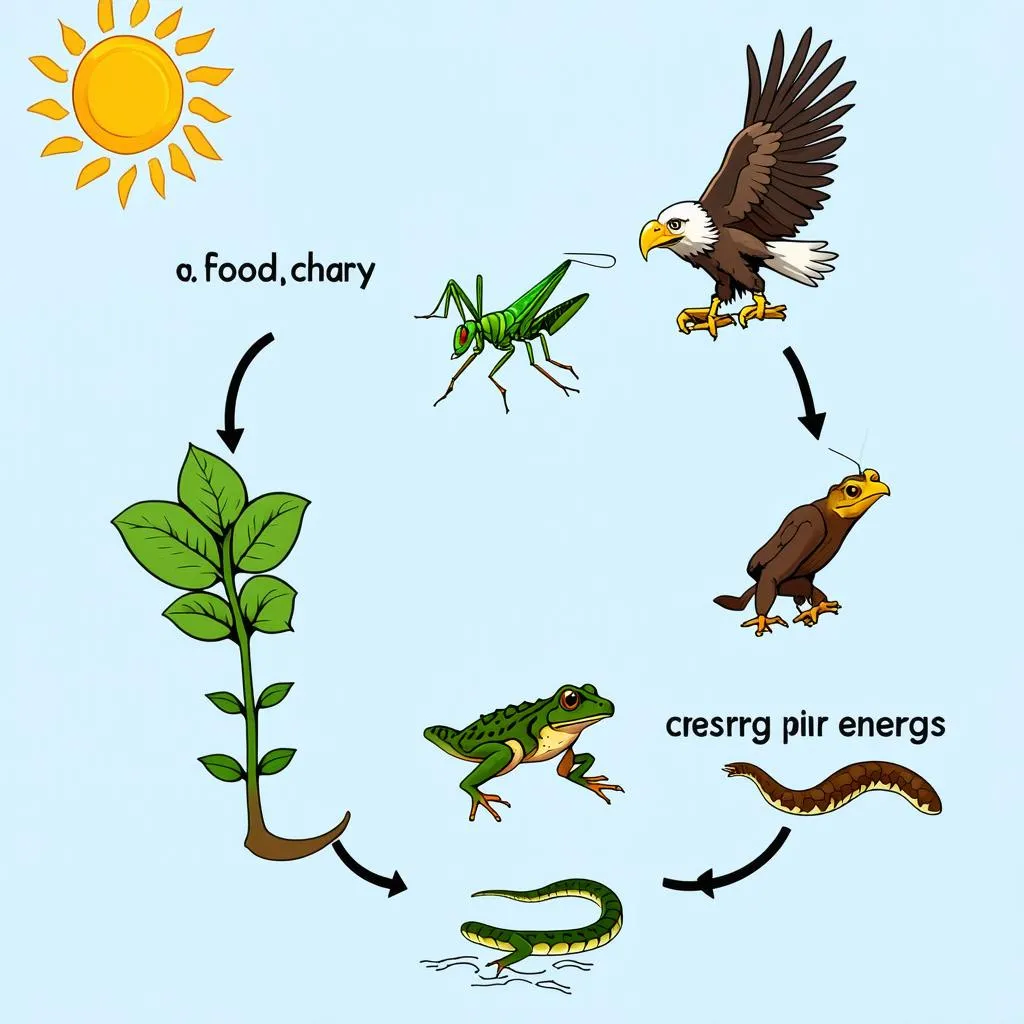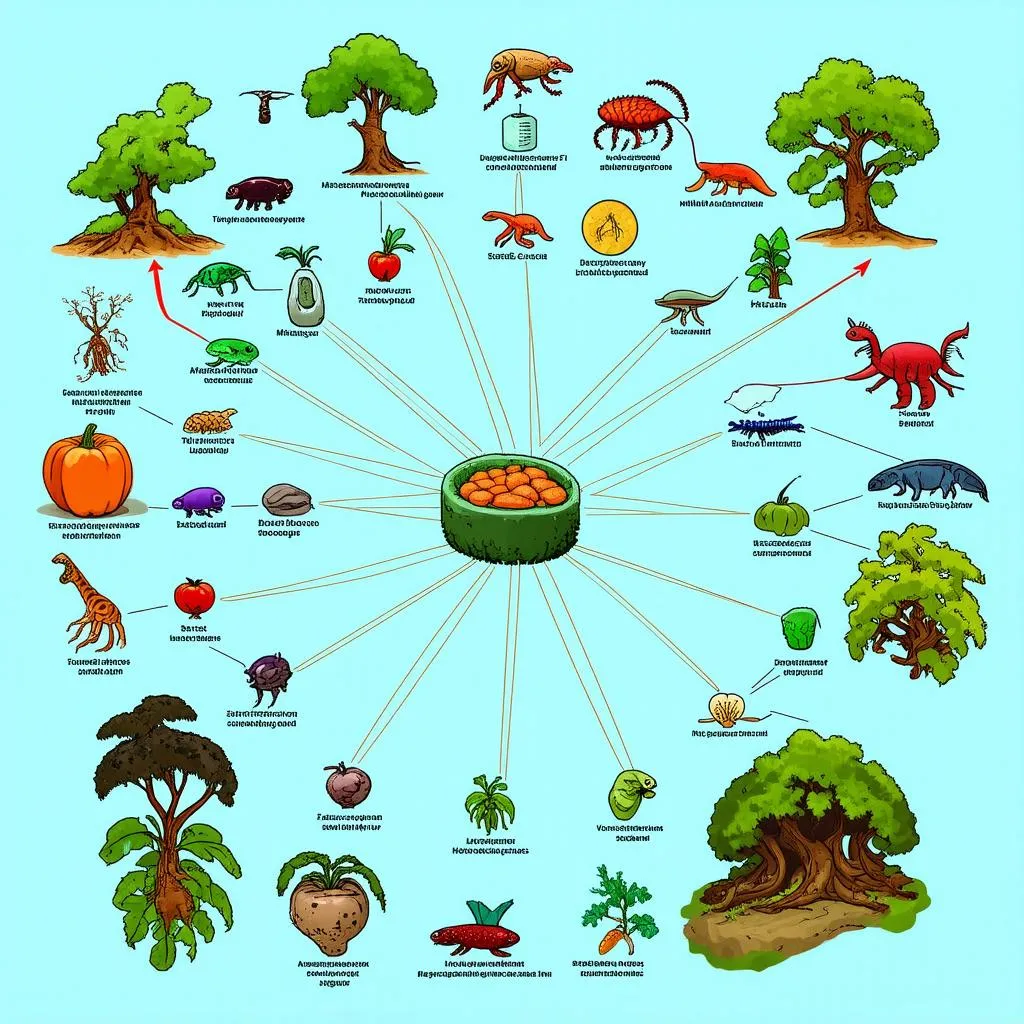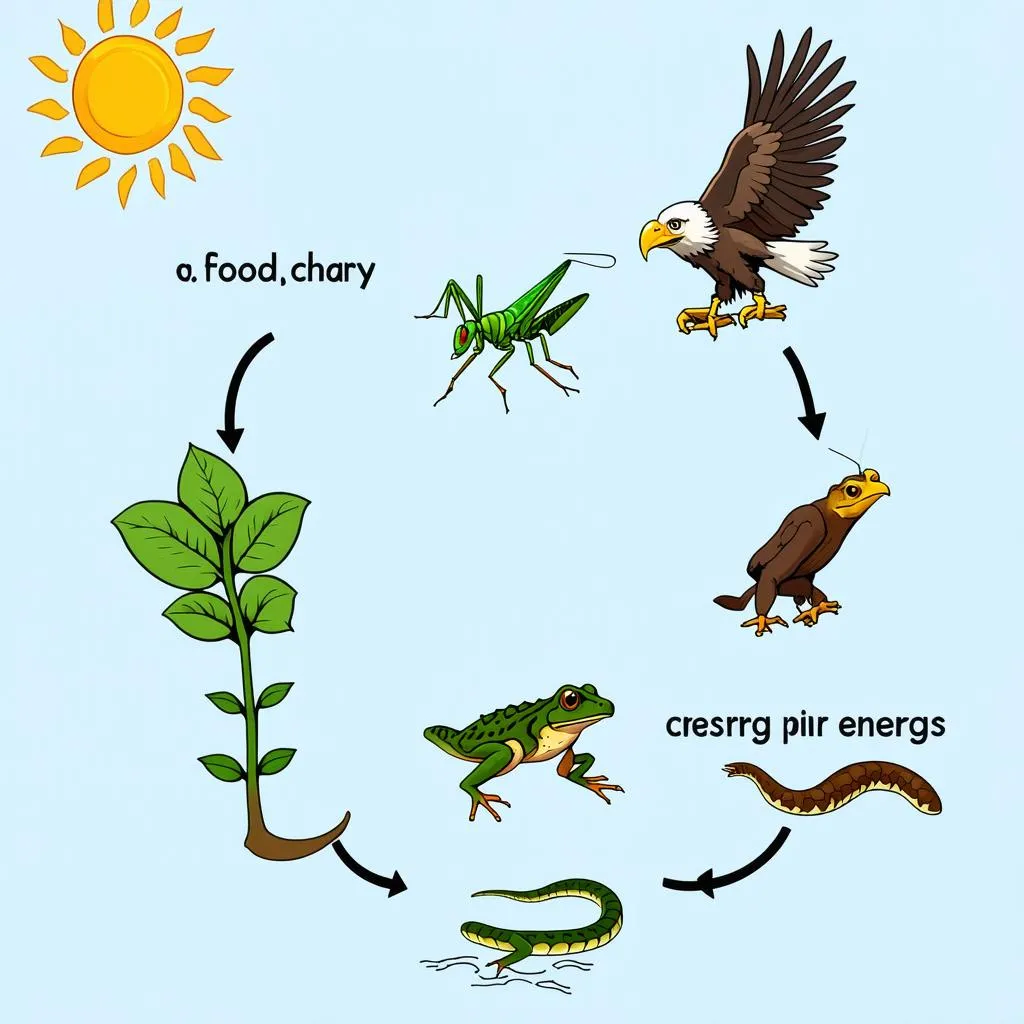Have you ever wondered what connects the majestic Bald Eagle soaring over Yosemite National Park to the humble squirrel gathering acorns below? Or how the vibrant coral reefs off the coast of Australia relate to the tiny plankton drifting in the ocean currents? The answer lies in the fascinating and interconnected world of food chains and food webs, where energy and nutrients embark on an incredible journey through different organisms.
The Flow of Energy and Nutrients: An Intricate Dance
At its core, a food chain illustrates the linear transfer of energy and nutrients from one organism to another. It all starts with producers, like plants and algae, which harness energy from the sun to create their own food through photosynthesis. This energy is then passed on to consumers when they eat the producers.
Imagine a deer grazing on grass in the Scottish Highlands. The grass, a producer, captures sunlight and converts it into usable energy. The deer, a primary consumer, then consumes the grass, absorbing the energy stored within. This energy is further transferred when a predator, such as a wolf, hunts and eats the deer.
However, ecosystems are rarely this straightforward. Instead of a simple chain, they function as complex food webs, with multiple interconnected food chains weaving together. For instance, our Highland deer might also nibble on berries, while the wolf might prey on rabbits or other smaller animals.
 Food Chain Illustration
Food Chain Illustration
Navigating the Web: Trophic Levels and Energy Pyramids
To understand the flow within food webs, scientists use trophic levels to categorize organisms based on their feeding relationships.
- Producers: Found at the base of the food web, these are the energy factories, converting sunlight into usable energy.
- Primary Consumers: Herbivores that feed directly on producers, like our berry-loving deer.
- Secondary Consumers: Carnivores that consume primary consumers, like the cunning wolf.
- Tertiary Consumers: Often apex predators, these organisms occupy the top trophic levels and feed on secondary consumers.
- Decomposers: An essential part of the web, these organisms break down dead organisms and waste, returning nutrients back to the ecosystem.
As energy flows through these trophic levels, it’s important to remember that only a small portion (about 10%) is transferred from one level to the next. The rest is lost as heat. This concept is visually represented by an energy pyramid, with producers forming the broad base and apex predators at the narrow top.
A Journey Interrupted: The Impact of Human Activities
Just like a travel itinerary can be disrupted, human activities can significantly impact the delicate balance of food webs. Pollution, habitat destruction, and climate change can have cascading effects, disrupting energy flow and impacting entire ecosystems.
For instance, imagine a bustling city like Tokyo built upon what was once a thriving forest ecosystem. The construction and pollution can fragment habitats, impacting the populations of producers and consumers alike. This, in turn, can disrupt the delicate balance of the food web, leading to unforeseen consequences.
FAQs about Food Chains and Webs:
- Why are food chains relatively short? This is primarily due to the loss of energy at each trophic level. As energy transfer is inefficient, there’s simply not enough energy to support a large number of levels.
- What happens if a species in a food web disappears? The impact can be significant, especially if it’s a keystone species. Imagine the ripple effects if bees, essential pollinators, were to vanish.
Planning your next big adventure?
Consider visiting the breathtaking national parks mentioned in this article, from the towering redwoods of Yosemite to the diverse wildlife of the Scottish Highlands. And for travel tips and tricks, don’t forget to check out TRAVELCAR.edu.vn, your one-stop resource for all things travel!
 Complex Food Web Illustration
Complex Food Web Illustration
Our World, Interconnected
Understanding food chains and webs allows us to appreciate the intricate connections that bind all living things on Earth. Just as a well-planned itinerary ensures a smooth journey, a balanced ecosystem ensures the health and survival of its inhabitants. As you plan your next travel adventure, remember the lessons learned from the natural world and strive to be a responsible traveler, respecting the delicate balance of our planet.


